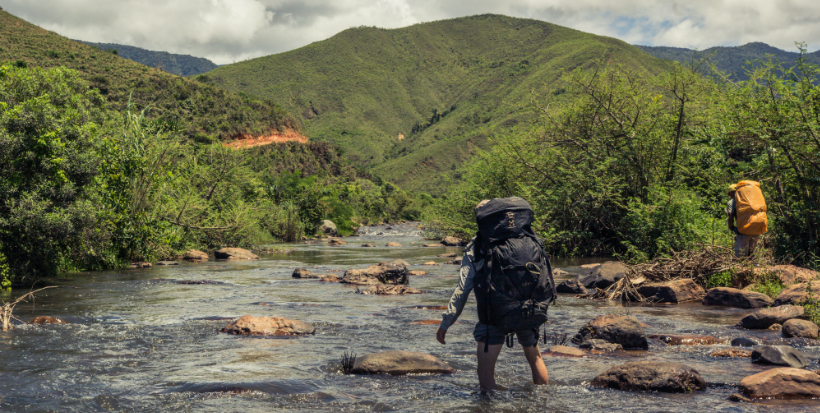On February 22, Ash Dykes, a 25-year-old adventurer, return back to the UK having become the first person in history to successfully walk the entire length of Madagascar, summiting its eight highest mountains on the way. Here he talks about impenetrable jungles, contracting malaria and a chicken called Gertrude.
Images by Suzanna Tierie

How do you feel after walking 1,600 miles for 155 days from the south end of Madagascar to the northernmost point?
When I actually arrived & finished at the most northern point (Cap’D Ambre), I had to walk two days back the same way to reach civilisation, the small tracks were too bad for any car to attempt to pick us up. But it was a surreal, exciting and an extremely satisfying feeling!
Why did you choose to take on this challenge?
I knew it would be amazingly unique: over 80 per cent of all fauna and flora are found nowhere else in the world – so that alone would mix things up. I knew barely anything about Madagascar and hardly anyone talks about it. I wanted to get into its interior and really discover what it’s about deep within the island.
The island is also constantly changing, from desert, shrub land, jungle, savanna and mountains, so I knew I was in for a difficult time trying to traverse this – but once I had Madagascar on my mind, I couldn’t ignore it!
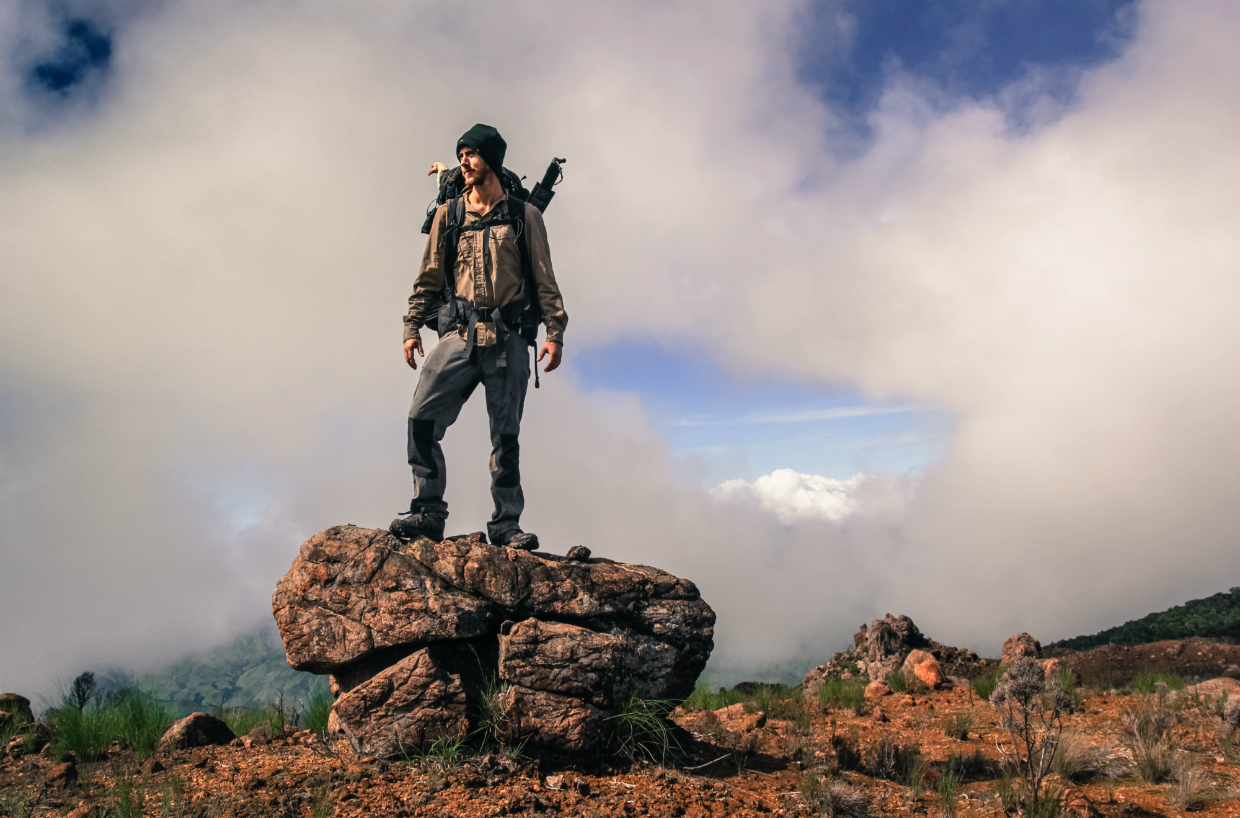
What did you want to highlight by making the journey?
I wanted to show people just how incredible and unique this island is, I met with conservationists to find out the work they’re doing to protect the wildlife and replant the forest. It’s just amazing how well they’re doing; new species are being discovered and last year the north saw 10,000 trees planted!
A lot of people think Madagascar is small, but it’s 2.5 times the size of the UK in terms of land mass, it truly is a huge island that holds a lot of uniqueness and beauty within.
What are the challenges that Madagascar faces?
A forever growing population, threat to the wildlife and forests, but I can see this slowly turning around. The new generation are getting good education about their country and the threats it faces are, so they are aware and up to date on what’s good and what’s not – they’re being told how precious their home is and that’s so important.
And of course, Lemur Conservation Network (who I partnered up with) are doing wonders already for Madagascar.
What were the types off terrain you encountered?
Beach, desert, savanna, shrub land, marshland, paddy fields, tropical dry forest, jungle and mountains.
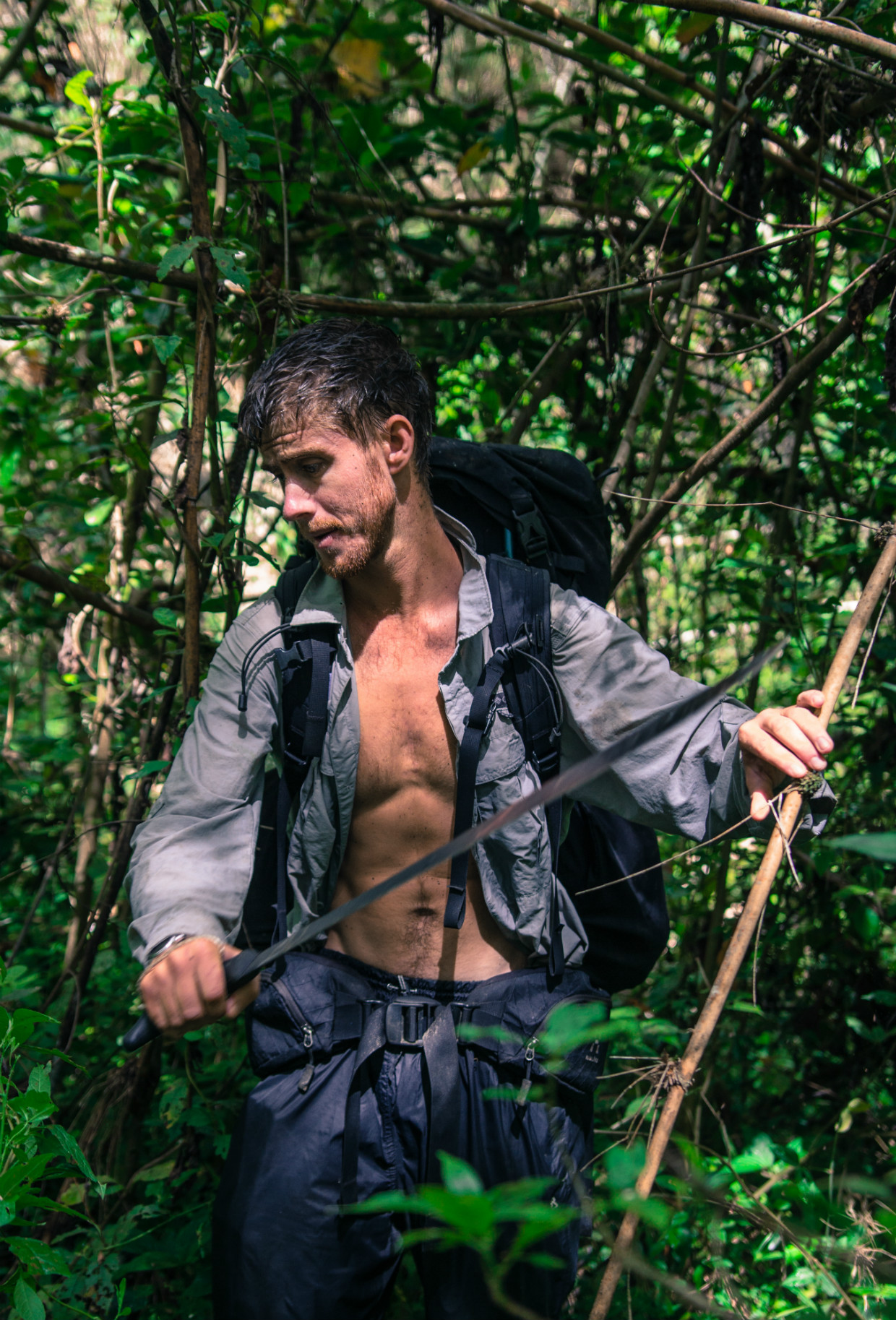
What were some of the biggest challenges of walking through this terrain?
The impenetrable jungles up north, we had many of the highest mountains to summit, but these were blocked off by dense jungle with no paths, sometimes we’d cover two miles in a day. Also being stuck on top of the highest mountain (Maromokotro), unable to find our way off as it was the rainy season. We shouldn’t have been up there and the fog stopped us from identifying anything in order to find our way off.
The river crossings were a challenge too. Having to spend four hours building a raft using natural resources to cross and later facing a very strong river at night and very almost being swept away by it – that was a very real & scary situation.And also catching the most deadly strain of malaria!
What was the climate like?
Really hot down south: 45C and dry (we were forced to drink slightly filtered salt water at times). Very rainy & stormy up north.
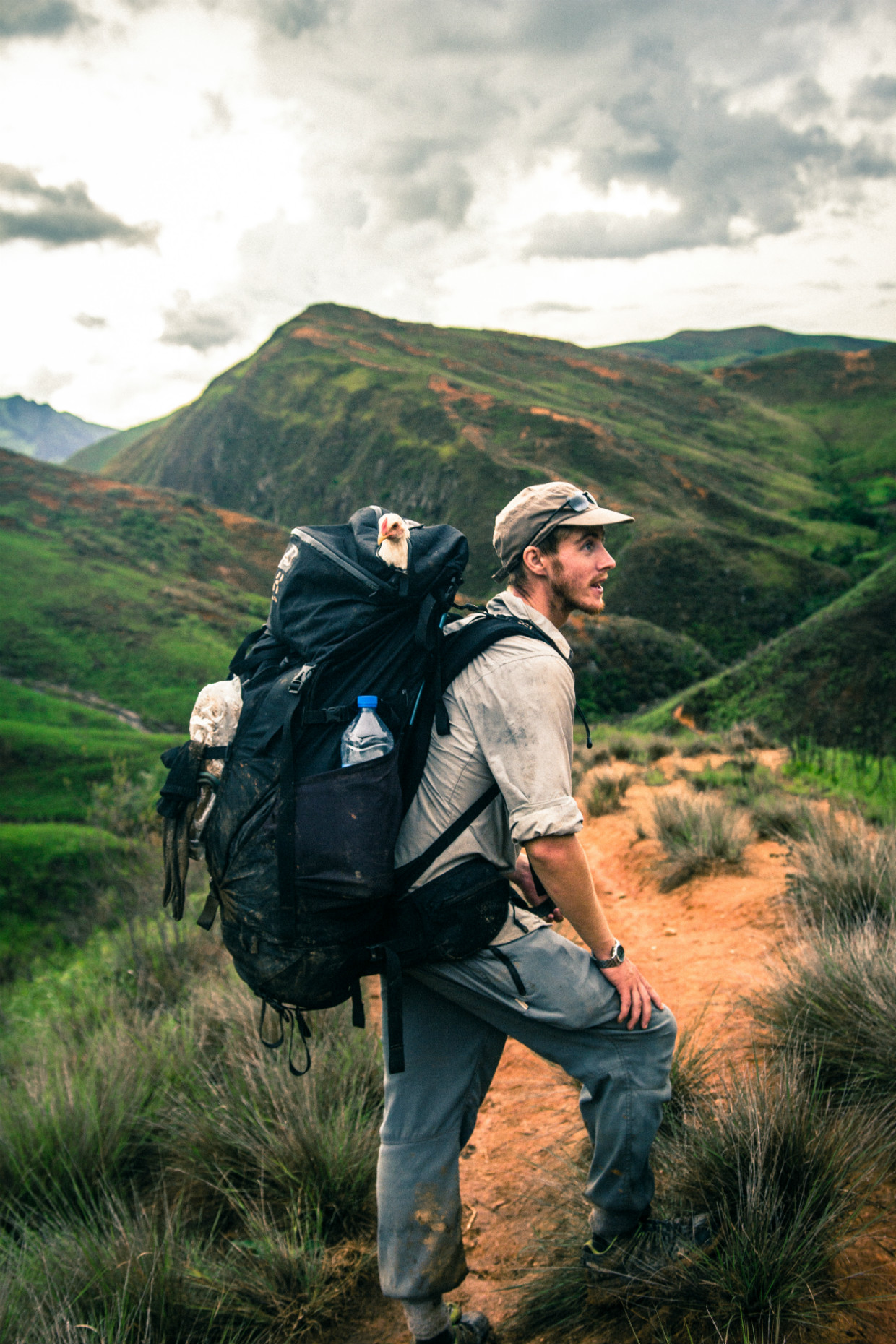
Tell us about Gertrude, the chicken!
In order to summit the highest mountain in Madagascar, Maromokotro, it’s important to the locals that you take a male-White chicken to the peak with you.
They say that this wards off the bad spirits that linger within the jungle. But of course there were two other big mountains before the highest, so Gerturde (the name I had given him – although it’s a girls name!) was with me for over two weeks in total, he had become domesticated, so anywhere I went, he followed. We had to set him free on top of the mountain, then we had to drink rum mixed with honey for the bad spirits to allow us back down!
You foraged some fruit – was it abundant?
The fruit was abundant, and there all sorts, from banana, mango, coconut, lychee, jack fruit etc, we’d also eat sugar cane and leaves.
There were times when we were really hungry, so strolling upon fresh fruit and climbing the trees to get them was always exciting!
What were the key pieces of kit of you relied on?
My water-to-go bottle, machete and maps.
What will be the next challenge?
I’m going to concentrate on the footage I filmed throughout, a book which I hope goes ahead and my UK tour coming up early 2017. But I’m excited to say I have got a few ideas for the next big expedition, I’m just unable to announce just yet – but it will be BIG!
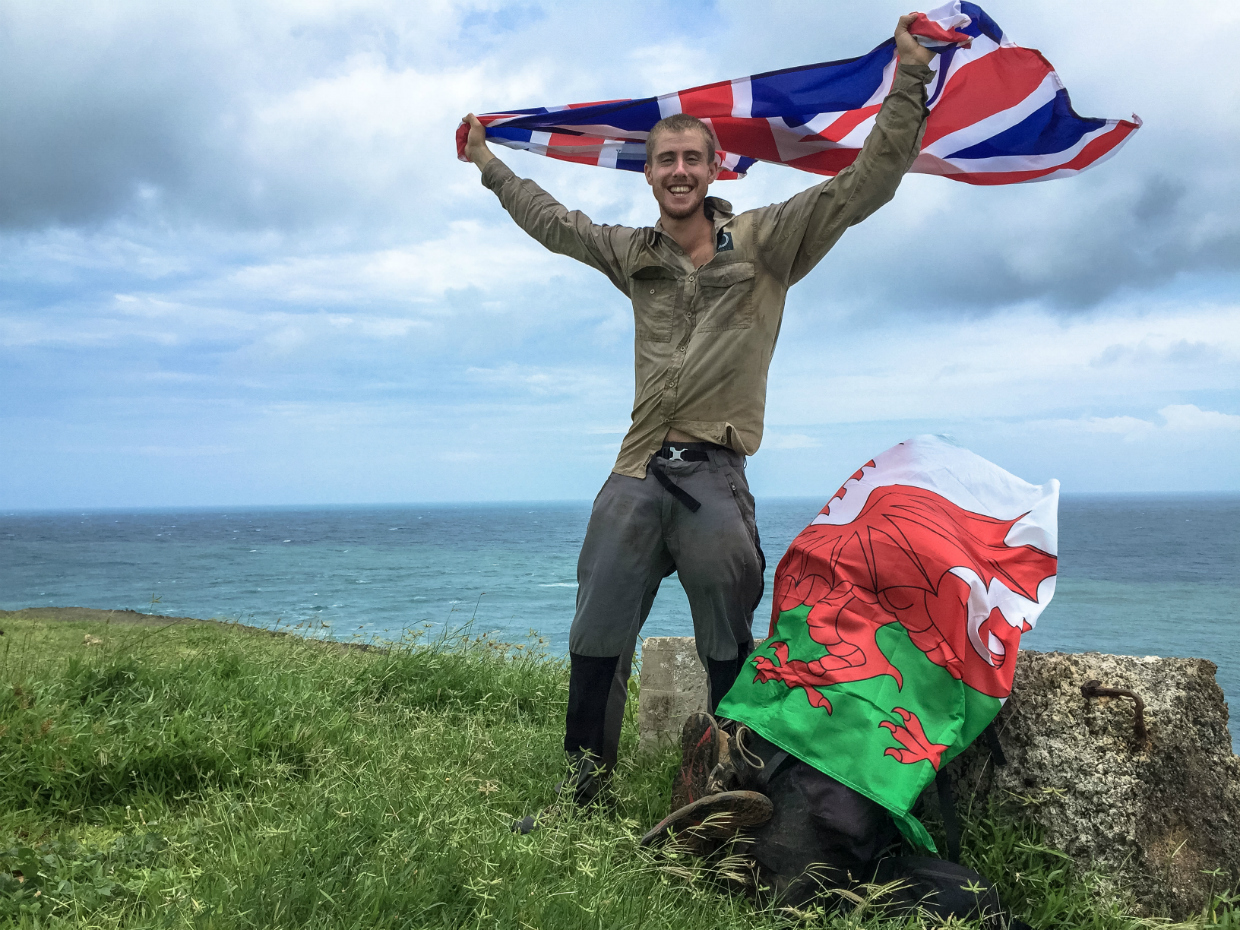
Visit www.ashdykes.com
To find out how you can get involved in your own Madagascar adventure and help the local people and wildlife of the island, visit the Lemur Conservation Network website at www.lemurconservationnetwork.org.



